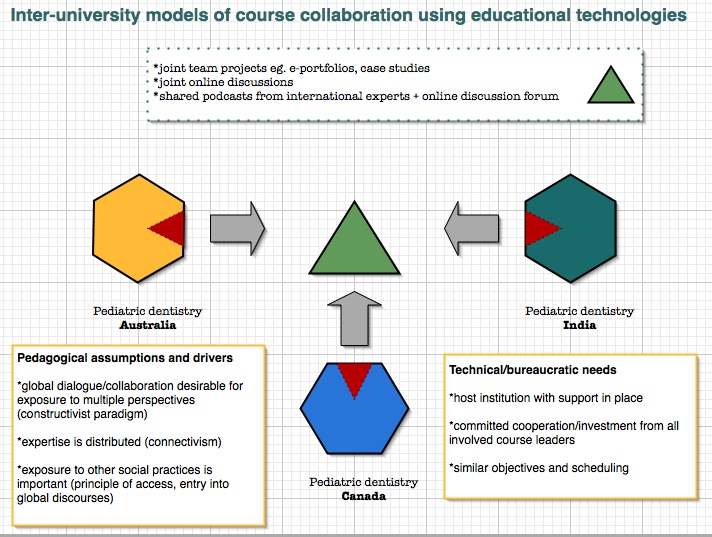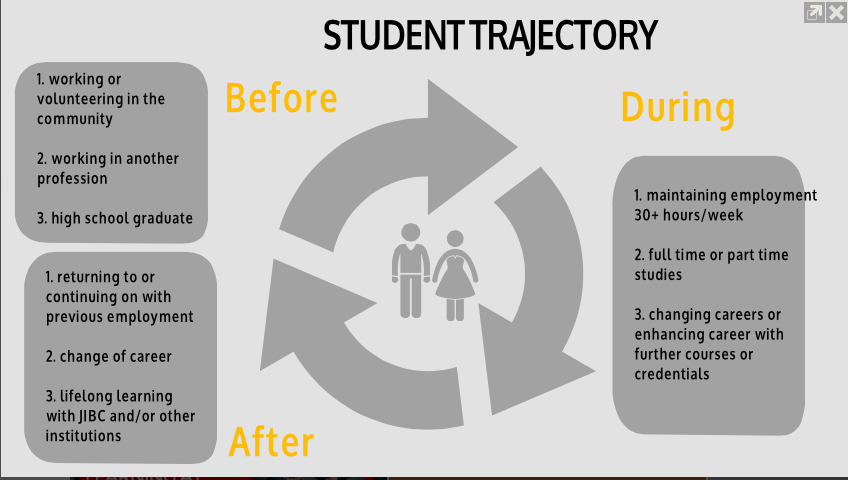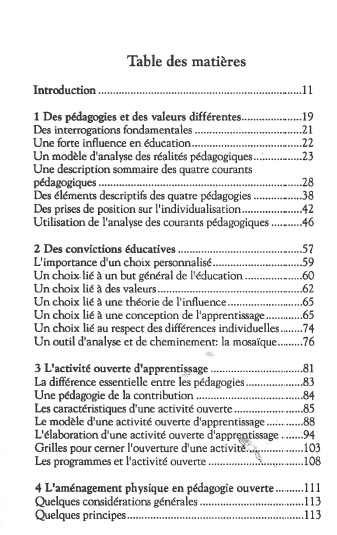Higher Ed hacks #1–open models
I’ll borrow the phrase from David Wiley’s recent post and offer my own hack on addressing the accreditation conundrum with OERs. I’m fairly new to the interesting conversations around open learning, open teaching, open content and open courseware, but as a instructional developer with two feet firmly planted in the distance education world I see these worlds as colliding quite nicely, especially since distance education in Canada has traditionally been driven by a social agenda that sought to provide access to non-traditional learners (of course, it’s up for argument whether this is still the case…).
Accreditation is undeniably the big problem remaining to be solved if open learning is going to secure a place in higher education (in agreement with the “elephant in the room” comment from D’arcy here). And while it’s hardly debateable that learning need not inhabit formal academic structures, accreditation is predominently the currency of choice, whether it’s economic or cultural capital that is being sought. I look forward to seeing the efforts and the open models that evolve from the creative hacking. I expect that some of these models might sit in structures that bypass universities altogether, some might sit in a university, and some might involve a combination of the two.
The way I’m understanding it, the current OER-inspired models range from self-directed-access-on-your-own type learning to open-course-with-open teaching (with credits for some). Personally, while I applaud the open teaching efforts of David Wiley’s course, Alec Couros’ course, and George and Stephen’s Connectivism course, it might not be attractive to late adopters, once the novelty of this type of model has worn off, since would appear to potentially require a good deal of unpaid effort on the part of the instructor.
So, this leads me to two possibilities that I’m putting out there as models for a happy marriage between OERs, accreditation, and teaching:
Option 1. Accredited self-access centres
Self-access centres have existed since at least the 1970s (which I suspect evolved out of language education’s own Edupunk movement that saw the emergence of some very *creative* methods–look up suggestopedia if you’re interested) and offer several models of independent or self-directed learning with a range of instructor/expert support, while providing accreditation. It’s not hard to see how this could be translated into a model for OER
The upside:
1. Centres are associated with a bricks and mortar university, therefore presumably the student learning plan negotiated with and agreed to by the centre would provide credits from the university.
The downside:
1. Institutional bureaucracy. I suspect that the facility of this model would be impeded by concerns about quality of content, and how the open content measures against the institution.
Option 2. Inter-Institutionally Shared Course Components
This is a model that we’ve actually tested and used multiple times since 2000 at the department of language and literacy education at UBC. It evolved out of a desire to add a more global perspective to a course by engaging with students at international institutions. However, institutional bureaucracies and policies make it very challenging to enroll international students not associated with the university into courses and programs for accreditation.
The model works on the assumption that university courses are generally composed of three central components—content, interactions, and assessed activities. It also works on the (social-constructivist) assumption that while content is important, the value of a course largely comes from the instructor-student and/or student-student interactions.
This is how it works, via an example of a 2001 iteration that we implemented with students located in Canada, Russia, and Mexico:
1. Course A (Canada) decided that the course content in a course on global issues and language could benefit from engagement with international partners. The course was being delivered f2f.
2. A Russian professor/acquaintance teaching an English course to business students was contacted to see whether a component of her course (Course B) could benefit from an international discussion. This course was being delivered f2f.
3. An instructor in Mexico teaching an Advanced English course on Popular culture and media (course C) was contacted to see whether her course could benefit from an international discussion. This course was being delivered f2f.
Being circa 2001, the 3 sites decided to include a graded 6 week online discussion forum activity (hosted by UBC) around topics that benefitted their own course objectives. Each site allocated different percentages to the activity, and different criteria for assessment and participation. Each instructor was responsible for grading their own students. Students received credits for their course activity from their own institution. Although this example did not require the use of OERs, it could, with the added benefit of introducing a more glocalised perspective by including international partners. We also considered how this model might be applied to other disciplines where global perspectives are of particular importance (eg. business, ecology, medicine).
The upside:
1. students received credit
2. students had access to 3 professors, not 1.
3. departmental and institutional approvals weren’t required
4. course content and discussions were greatly enriched (and validated) through exposure to the perspectives of the international partners
5. students gained considerable academic literacy in English (English was not a first language for any of the students)
The downside:
1. there were varying levels of internet access among the 3 partners
2. some challenges in coordinating the participation of the 3 instructors
We visualised the model like this, with a Pediatric Dentistry course as an example:




5 Comments
Pingback:
Pingback:
Pingback:
Pingback:
Maya Rasheed
I think Second Life is a big Ed hack. I learn English there and I know people learn a lot of other subjects too.